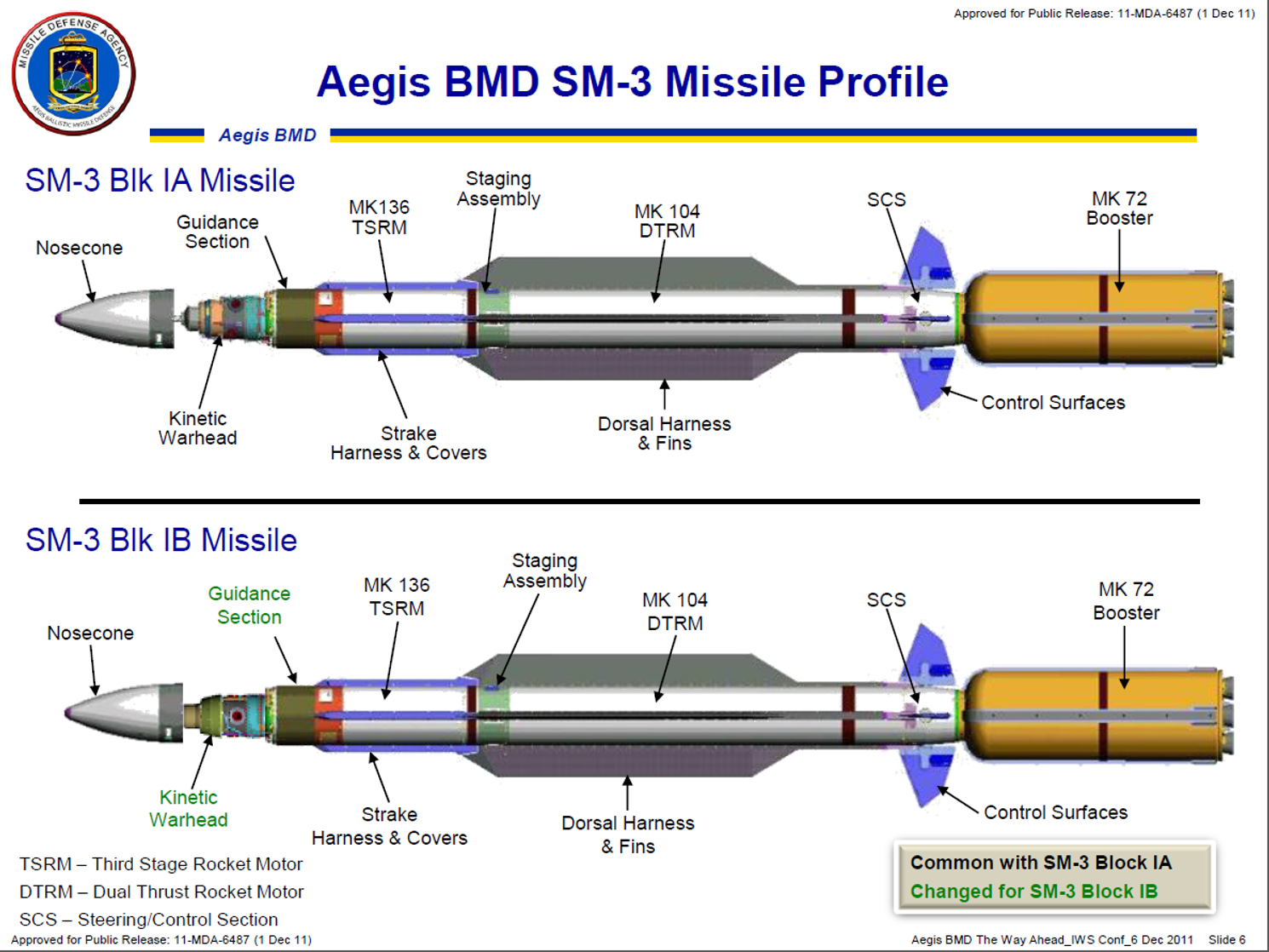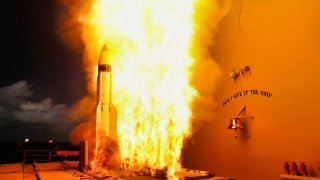Game Changer: The Navy Wants to Rearm Warships with Missiles at Sea
The U.S. Navy's Arleigh Burke-class destroyers, equipped with advanced missile systems like the Mk 41 vertical launch system (VLS), face a significant logistical challenge in prolonged conflicts due to their inability to rearm at sea.
“Winning will require [keeping] our assets in the fight. Rearming our warships’ vertical launch tubes at sea is amongst the clearest example of sustaining capacity and increased persistent combat power from the current force,” Del Toro said. But as simple as replenishing launch cells at sea may seem in theory, in practice, it comes with significant engineering hurdles… and even more risk.
Replacing spent VLS cells on a pier is delicate work in itself. Hoisting a 3,000-pound 25+ foot canister from a horizontal position to a vertical one, positioning it properly over a hole designed to accommodate the exact size of the cell with practically no additional tolerances, and lowering it into position is challenging enough before you consider the fact that the canisters house a combination of rocket fuel and high-explosive warheads. Reloading these systems can take as long as two or even three full days. This process becomes exponentially more dangerous when being done across ships tethered together while underway at sea and during a fight.
This forces military planners to find a way to maintain sufficient fighting capacity in theater while constantly rotating ships into and out of the battlespace, but also paints a significant target on the friendly ports equipped for the job.
BABY STEPS TOWARD AT-SEA REARMING
The first step toward solving the rearming problem is to equip vessels for the job, but not with the intent of underway replenishment. Instead, these properly equipped vessels can turn any friendly port into a rearming station. The premise is to tie the resupply ship to a stationary pier, allowing the cruiser or destroyer to pull up alongside it and be secured in place with bumpers between the vessels. From there, the delicate work of lifting and then lowering VLS cells into their respective modules can be done.
This approach was demonstrated aboard the USS Spruance (DDG 111) destroyer in September 2022, using an offshore support vessel contracted to the Navy’s Military Sealift Command, called the Ocean Valor. Yet, a subsequent effort conducted while anchored in a calm harbor a month later failed.
The Ocean Valor was equipped with a dynamic positioning system that controls ship speed and steering to keep it properly positioned approximately 90 feet from the destroyer and at the right angle. According to Capt. Kendall Bridgewater, commodore of Military Sealift Command Pacific, the system functioned so well that he doesn’t believe keeping bumpers in place, meant to protect the ships in the event of a collision, would even be necessary moving forward.
However, despite the two ships holding the proper positions, the rocking sea and wind made the missile canisters (which were inert for the test) sway in a way that was unsafe for the destroyer’s personnel to approach and guide into the launch module.
This program proved that the Navy can rearm ships in more ports than ever, but still serves as only the initial step toward resolving this lasting vulnerability. In the long term, the Navy intends to be able to rearm VLS cells while warships and resupply ships are sailing side by side at speeds of around 12 knots (a bit shy of 14 miles per hour), just as they do for standard resupply operations. This not only creates challenges regarding ship positioning, but prevents ships from breaking away from one another rapidly in the event and an inbound attack. Both are challenges engineers within the Office of Naval Research continue to contend with.
To that end, multiple new crane systems, more specialized than the one used aboard the Ocean Valor, are already in active development. Further, another successful demonstration of a similar pier-side rearming capability using a different type of crane, this time with the USS Porter tied “skin-to-skin” to the USNS William McLean dry cargo ship, was announced in August 2023.
Another possibility is devising a system that transfers these missile cells to ships using a similar pulley system to the ones leveraged for equipment and supply transfers today. However, it would mean that the warship itself would need the right equipment to transition the canisters from a horizontal to a vertical position, as well as a strong enough crane to then move the canisters into their modules. But another approach now appears even more promising.
In 2024, the Navy is expected to conduct an at-sea demonstration of the new Transferrable Re-Arming Mechanism (TRAM) developed by the Naval Surface Warfare Center Port Hueneme Division using a 1996 proposal penned by former Army warrant officer turned Marine engineer, Marvin Miller as its basis. This design, which includes the use of an articulating crane that can lift and rotate canisters into the proper vertical position was considered technologically unfeasible in the mid-1990s, but the Navy seems confident it can make it work today.
If the Navy’s new approach to Miller’s concept works as he envisioned, underway rearming of VLS cells should be possible in sea states ranging from a zero on the Beaufort Scale (zero wind speed, zero wave height) all the way to a five (with 17-21 knot wind speeds and waves maxing out at six-eight feet tall).
According to reporting from NavalNews, Chief of Naval Operations (CNO) Admiral Lisa Franchetti observed a TRAM demonstration at Port Hueneme in December 2023, and expressed her approval of the program’s progress and capabilities, though to date, publicly available information remains somewhat sparse.
The at-sea demonstration of this new system is anticipated sometime in the summer of 2024, but to date, no further details have been released.
HUGE IMPLICATIONS
The long-term implications of rearming surface combatants at sea are difficult to overstate: according to the Center for Strategic and Budgetary Assessments analysis, as few as just two or three resupply ships that could rearm forward deployed destroyers would have the same impact as fielding a whopping 18 additional cruisers and destroyers in theater, simply by eliminating the need for lengthy trips back and forth from friendly ports.
“Viewed in this light, a fleet VLS rearming at sea capability could provide a ‘value’ in equivalent combatants of at least $11-37 billion, and would be a high-return investment for the Navy,” Tim Walton, a senior fellow at the Hudson Institute’s Center for Defense Concepts and Technology and one of the co-authors of the study later told Defense News.
But in the minds of military planners, it’s not the cost savings that really matter, but rather the increased combat capacity.
“This capability will herald nothing short of a revolution in naval surface warfare logistics,” Del Toro said. The at-sea re-arming option provided by TRAM is “a game-changing [capability] that will be operational within two to three years, and will make our surface navy more formidable, serving as a powerful maritime deterrent,” he said.
While a great deal of our focus on defense technology tends to center around emerging technologies and capabilities that could have entirely new battlefield effects, the effort to find a way to rearm the U.S. Navy’s warships at sea serves as an important reminder that deterring large-scale conflict with nation-level adversaries has never been strictly about new technologies.
In reality, the most effective technology-based programs are often focused not on fielding new systems or platforms, but rather, on increasing the effectiveness or efficiency of existing weapon systems. Fielding entirely new warships that are purpose-built to be rearmed underway, alongside entirely new fleets of resupply vessels designed with that distinct purpose would surely be the most effective solution to the Navy’s rearmament problem, but such a solution is impractical from both budgetary and timeline perspectives.

Fielding a relatively low-cost method of rearming the Navy’s existing warships, using existing resupply vessels, may not be as sexy, but it can be done faster and for a lot less money, while delivering the same effect.
And when it comes to deterring or, at worst, winning a large-scale conflict, that’s the sort of technological breakthrough that truly matters most.
About the Author: Alex Hollings
Alex Hollings is the editor of the Sandboxx blog and a former U.S. Marine that writes about defense policy and technology. He lives with his wife and daughter in Georgia. This first appeared on Sandboxx.


